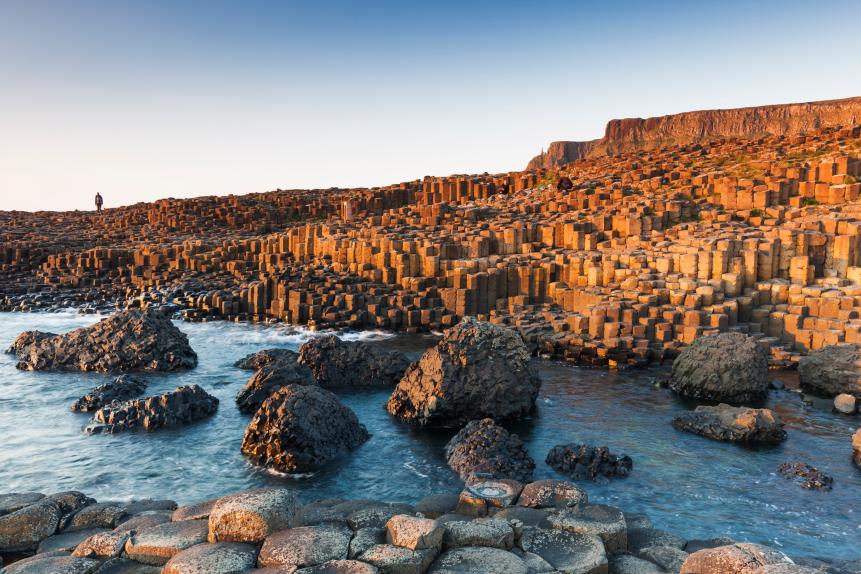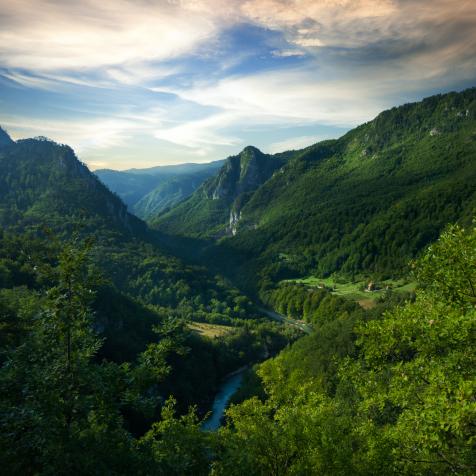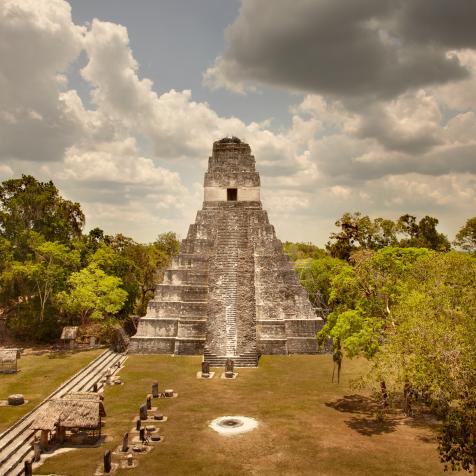
Stuart Stevenson photography
Giant’s Causeway: The Fascinating Legend Behind Ireland’s Most Famous Landmark
The Giant’s Causeway is known around the world for its beautiful interlocking basalt columns – over 40,000 of them in fact – which look out towards the stormy, gray North Channel.
Most of the columns are hexagonal shaped, while the tallest are 39ft high, and the solidified lava in the cliffs is more than 90ft thick in places. The stunning natural wonder is located in County Antrim on the north coast of Northern Ireland, three miles northeast of the town of Bushmills, and was declared a World Heritage Site by UNESCO in 1986.
As legend has it, Northern Ireland was once home to a great giant, named Fionn Mac Cumhaill. But when another giant, Benandonner, who lived across the Irish Sea in Scotland, threatened Ireland, Fionn retaliated. He tore up great chunks of the Antrim coastline and hurled them into the sea. This newly-created path – the Giant’s Causeway – paved a route over the sea for Fionn to reach Benandonner.

Peter Zelei Images
But once Fionn reaches Scotland via the causeway, he realizes that actually it’s not such a great idea as Benandonner is a huge giant – much bigger than Fionn is. In order to save himself, Fionn retreats to Ireland and is disguised as a baby by his quick-thinking wife. When Benandonner arrives, hot on the heels of his foe, he sees Fionn disguised as a baby and realizes that if a mere baby is that big, then the father must be ginormous, far bigger than Benandonner himself.
Following this horrifying realization, Benandonner flees back to Scotland, tearing away huge chunks of the causeway in his rush to get as far away as possible from Fionn. And this is how the legend of the Giant’s Causeway was born.
In other versions, Fionn was challenged to a fight by Benandonner and so built the causeway so the two could meet, and Fionn defeats his enemy. Across the sea, at Fingal’s Cave in Scotland, there are identical basalt columns, possibly giving rise to this centuries-old legend.

Walter Bibikow
So how was it really formed?
The story, unfortunately, is not quite as exciting as warring giants – although it’s still pretty cool. Around 50 to 60 million years ago, Antrim County was subjected to intense volcanic activity. Highly fluid molten basalt speed through chalk beds to form a large volcanic plateau. As the lava cooled, contraction occurred, and cracks drove downwards, resulting in the pillar-like structures that we see today.
Whether you want to explore legend or geology, the Giant’s Causeway can be explored up close and personal. A number of the basalt columns have been weathered into fascinating shapes, including the “Camel’s Hump”, “Honeycomb” and “Giant’s Harp”. Visitors can actually walk on the stones, just make sure to check the weather - it’s completely exposed and can get very slippery in the rain.


















